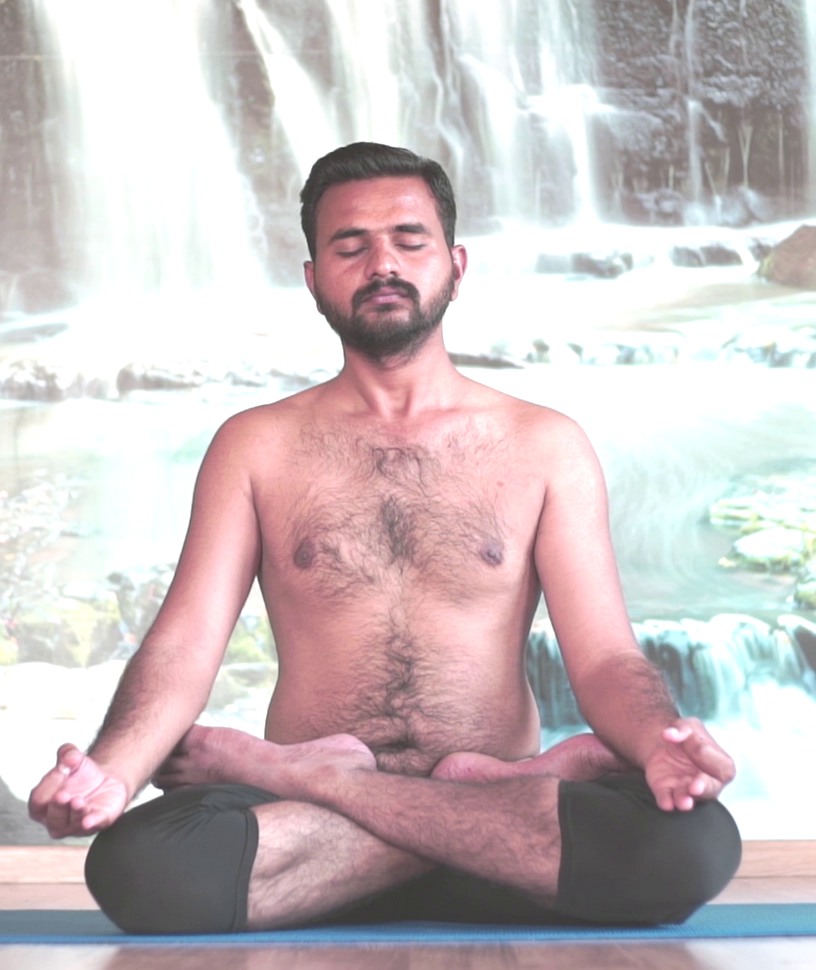

KAPALABHATI ('Frontal Brain Cleansing' a Kind Of Breathing Exercise)
'Kapala' means skull (head) and 'Bhati' means to shine. Because this practice makes the skull(head) shine, therefore, it is called Kapalbhati. In other words, it rejuvenates the skull (head) and the mental functions. In the GHERANDASAMHITA, it is known as Bhalabhati; bhala and kapala means the 'cranium' or forehead. Bhati is ' light' or 'splebdour'; it also means 'perception and knowledge'.
Kapalabhati is one of the pre- requisites of pranayama. It invigorates the entire brain and awakens the dormant centres, which are responsible for subtle perception. In kapalabhati breathing is done like pumping action of a pair of bellows. Inhalation is passive and spontaneous and exhalation is with force. Kapalabhati is part of Bhastrikapranayama ; the different between the two is only that in Bhastrika a practitioner uses force on both inhalation and exhalation , expanding and contracting the lungs; while in Kapalabhati inhalation is automatic and passive and it occurs as a result of forced exhalation . Kapalabhati actively reduces the volume of air in the lungs through forced exhalation. In HATHAYOGAPRADIPIKA, Kapalabhati has been described as follows:
TECHNIQUE:
1) Sit in meditation posture, eyes closed and the whole body relaxed.
2) Inhale deeply through both nostrils expanding the abdomen and exhale with a forceful contraction of the abdominal muscles.
3) The next inhalation takes place passively allowing the abdominal muscles to expand. Inhalation should be spontaneous or passive without effort.
4) The breathing must be of the bellows type.
5) Repeat this exercise rapidly several times. While doing this exercise, the abdomen should distend and contract.
PRECAUTIONS:
1) It should be done before meditational practice and after asanas and neti.
2) Inhalation should be spontaneous I . e. Without effort; and the exhalation should be
with force but at the same time it should not make the person feel breathless.
3) This practice should be avoided by the person suffering from cardiac conditions, giddiness, high blood pressure, vertigo ,epilepsy, stroke, hernia and gastric ulcers.
BENEFITS:
A)PHYSIOLOGICAL BENEFITS:
1) Kapalabhati clears the respiratory passenge and keeps it free from impurities and excess mucus.
2) It is useful in treating cold, rhinitis (inflammation of the mucus membrane of the nose), sinusitis and bronchial infections .
3) It stimulates nerves in the abdominal region; massages abdominal organs ; and improves digestion.
4) It increases capacity of lungs.
5) It purifies the frontal air sinuses and stimulates the brain.
B)SPIRITUAL BENEFITS:
It produces a peculiar awareness in the forehead region and enhances the effects of bhrumadhya Drsti; it helps to awaken the Kundalinisakti. It induces inner awareness and reduces alertness for external environment.
